Continue doubling and adding the next letter of the alphabet to build the pattern as far as you want to go.
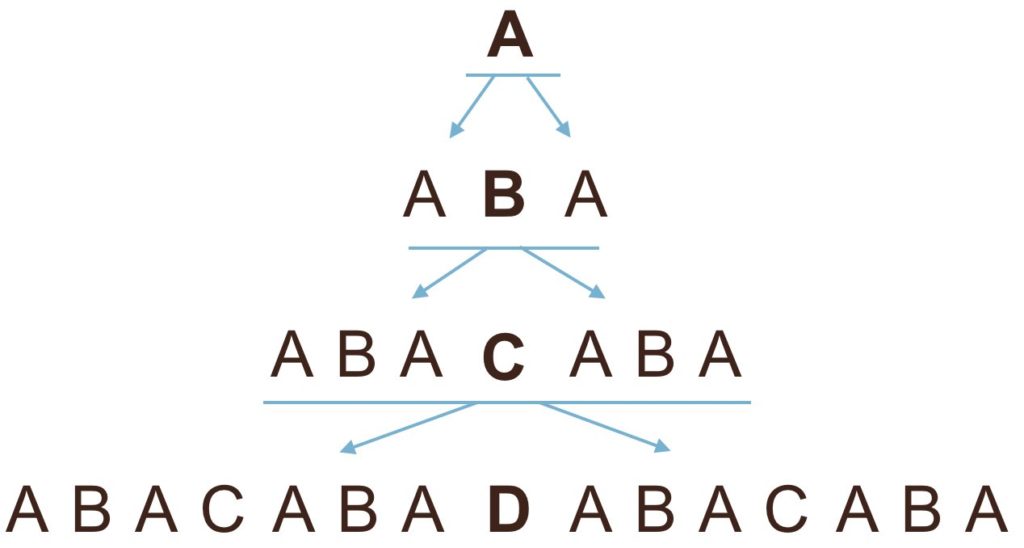
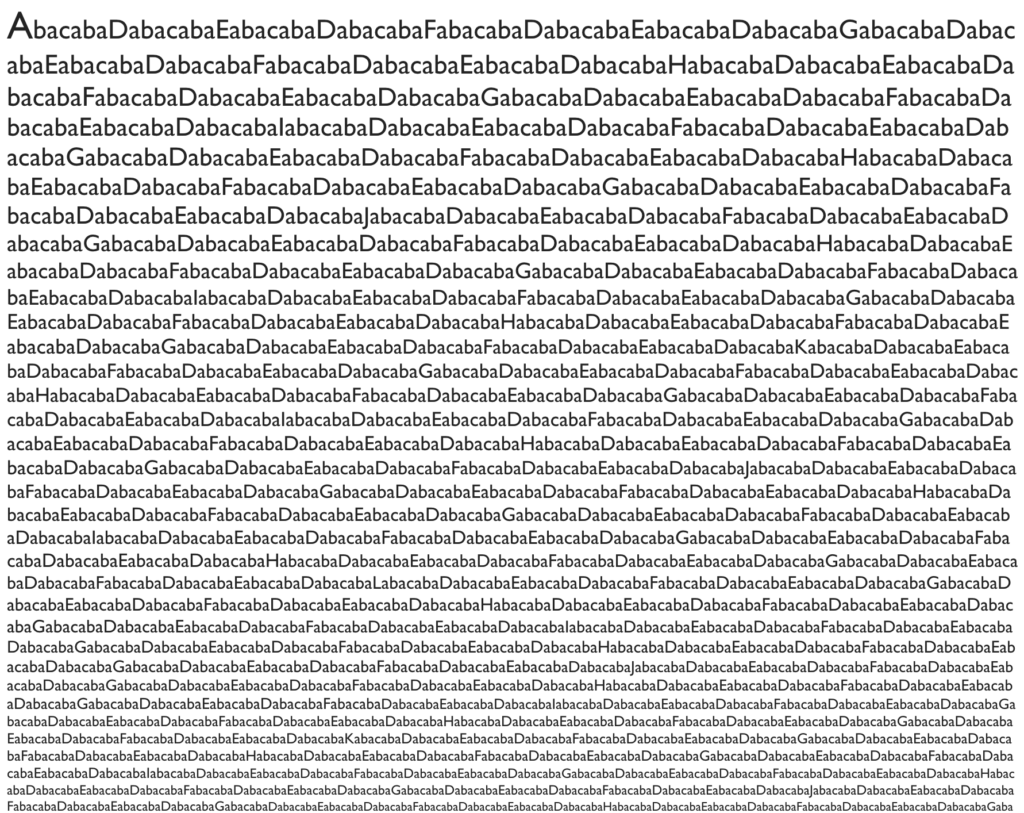

Geometric lengths If we give each letter a length, doubling the length for each in order, we get this pattern:

This is the same pattern on an English ruler:

Trees Rotate this 90° and we can see the shape of a play-off tree:

Rotate 90° again and we final a fractal binary tree. We could think of this as a family tree … everyone comes from two parents, each of them with two parents, and so on. That means every person is right in the middle of their own Abacaba pattern!

Here’s the same shape with the branches at 120° angles. You’ll find variations of this shape all over nature: in plants and in the human body for example.

Fractals Here’s another famous fractal, the Sierpinski triangle, made from removing the center of a triangle and then removing the centers of the remaining triangles, and so on. It’s full of Abacaba patterns …

Here’s a few of them. There are infinitely many more!

The Mandelbrot set is a well-known fractal built on the complex plane.

Zoom in on the nose to the left and you’ll see the Abacaba pattern rippling off to infinity!
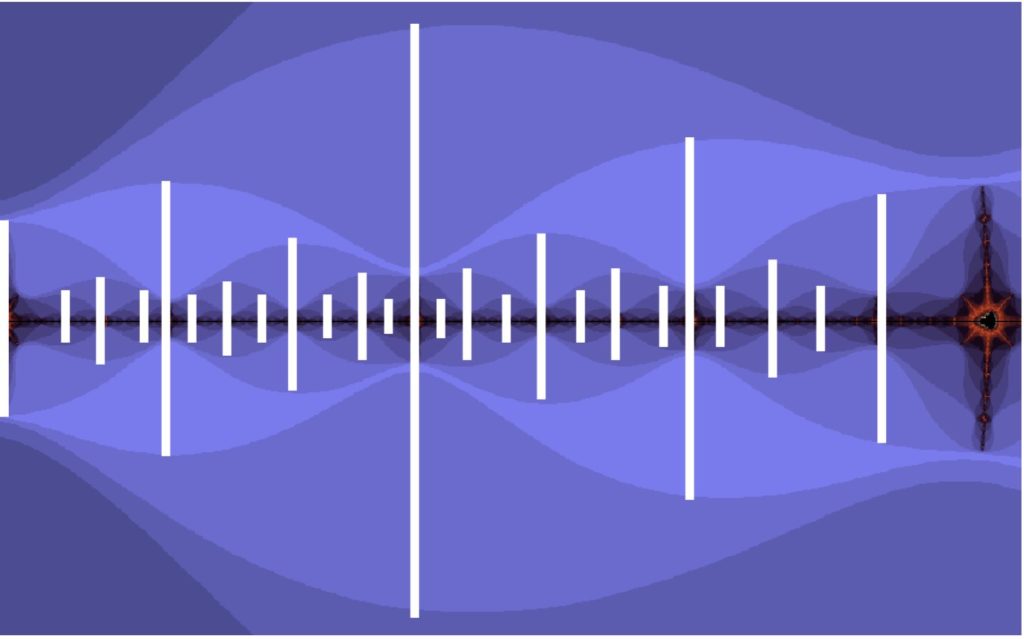
Cantor dust is created by staring with a line segment and removing the center third. Each of the remaining pieces has the center thirds removed, and so on. Here are the first few stages… the holes make an Abacaba pattern:

When the process is carried out to its limit at infinity, Cantor dust has an infinite number of points, no line segments at all, and a total length of zero. The 2d version is called the Sierpinski Carpet. Start with a square, divide into a 3×3 grid and remove the center square. Repeat the process on the remaining 8 squares. The sum of the edge lengths of a Sierpinski Carpet is infinite and it has an area of zero … it becomes a sheet composed entirely of holes! Here is a mirror made with the first 5 iterations – there are over 4000 holes in the frame!

There is also a 3d version called a Menger sponge. It has infinite surface area and zero volume. Weird.
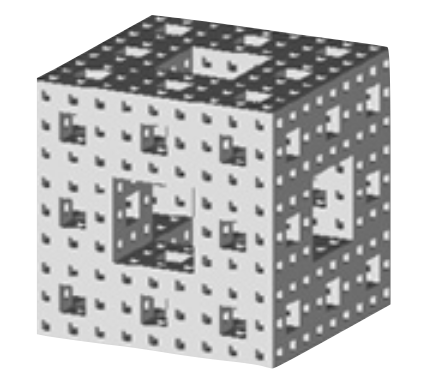
Number systems Binary numbers are used everywhere. If you pay attention to the number of zeros at the end of each number as you count in binary, you’ll find the Abacaba pattern.

If we instead start with binary 00000 and switch the digits one by one in the position of the Abacaba pattern (digit 1, then 2, then 1, then 3, and so on) we get a number sequence called the Gray code. It contains all of the integers with none repeated.

This number sequence is used in devices that sense rotation. Because only one bit is changed at a time, errors are very small. You can see that Gray code also makes a fractal binary tree!


Here’s what happens when we connect the integer sequence with a curve that passes through the numbers in the Gray code sequence. 
Hyperspace Planning to travel in hyperspace and worried about getting lost? Following the Abacaba pattern will take you to all of the corners of hypercube. Here’s four related figures in four different dimensions. Label the direction of each dimension with a different number (or letter). Start at any corner, and move according to the Abacaba pattern. You’ll visit every corner. It works in any dimension!
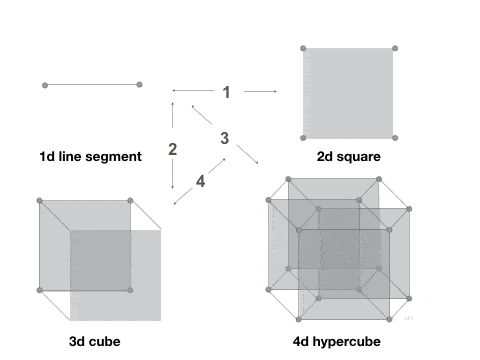
Watch the TEDx talk on Abacaba:

